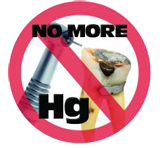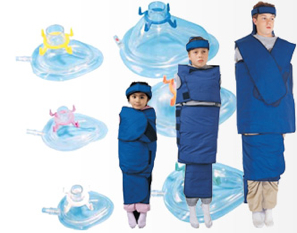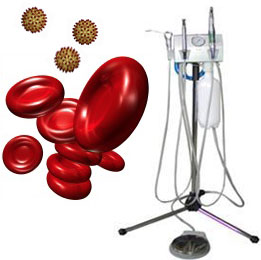Tomorrow the an FDA panel will “probe cavity fillings” (that’s really the title of this segment shown on CBS this evening):
http://www.cbsnews.com/stories/2010/12/14/eveningnews/main7150398.shtml

Once again the media is out to sensationalize the debate by conjuring up images of daily vomiting, years of sinus congestion, and children who can’t go an hour without a seizure or two. And once again, it is mercury that is the alleged culprit.
If it really were as bad as it appears for the few people that are willing to testify before the panel, don’t you think that there would be a significantly larger population of people affected by mercury poisoning?
Four years ago, a panel decided that further study was necessary to understand whether amalgams give off more vapors when being placed or removed versus the amount of mercury vapor produced with chewing and brushing.
Maybe they were on to something there! What the FDA should do is launch a study of mercury levels in the blood, urine, and body tissues of the dentists who regularly place and remove amalgams, correlating symptoms described by those afflicted with mercury toxicity with the dentists in the study. If those symptoms are consistent in the dentists who have high levels of mercury, then go from there to decide whether amalgams are truly a problem.
The ADA stands behind the science. And until it is refuted, they are doing the right thing by not wavering on their position.
UPDATE – December 20th, 2010
Last week, an advisory panel to the US Food and Drug Administration (FDA) convened a professional panel review to again look at the safety issues associated with mercury amalgam in dentistry. A group of scientists and dental and medical professionals, lead by the International Academy of Oral Medicine and Toxicology (IAOMT), had called for FDA to reconsider its July 2009 “no risk” classification of mercury fillings. The FDA panel concluded that there are no huge scientific flaws in the agency’s 2009 finding that mercury-based dental fillings are safe for adults and children aged 6 years and older. The panel, however, recommended that the FDA look at more data, including the latest data, on the possible health risks dental amalgam poses to pregnant women and their fetuses and to young children, particularly nursing infants whose mothers have these fillings. The panel also said the FDA should consider adding warnings for these groups to the material’s product instructions. The ADA commended the panel’s call for continued research while offering support for the FDA’s current amalgam regulation. The panel’s call for more scientific data acknowledged concerns of dental amalgam opponents who link mercury exposure to dozens of diseases ranging from autism to Alzheimer’s disease.





 No one likes the idea of seeing a child being restrained. Especially not at the dental office. But on the same hand, if a child is admitted to a hospital, has thousands of dollars spent to knock them out with potentially risky gas, and is in need of a procedure that takes only minutes to perform, which care is the right one?
No one likes the idea of seeing a child being restrained. Especially not at the dental office. But on the same hand, if a child is admitted to a hospital, has thousands of dollars spent to knock them out with potentially risky gas, and is in need of a procedure that takes only minutes to perform, which care is the right one? So maybe it was the equipment allowing backflow into patients mouths during extractions (blecch), or inadequate sterilization measures, but whatever the case, Hepatitis B has been
So maybe it was the equipment allowing backflow into patients mouths during extractions (blecch), or inadequate sterilization measures, but whatever the case, Hepatitis B has been